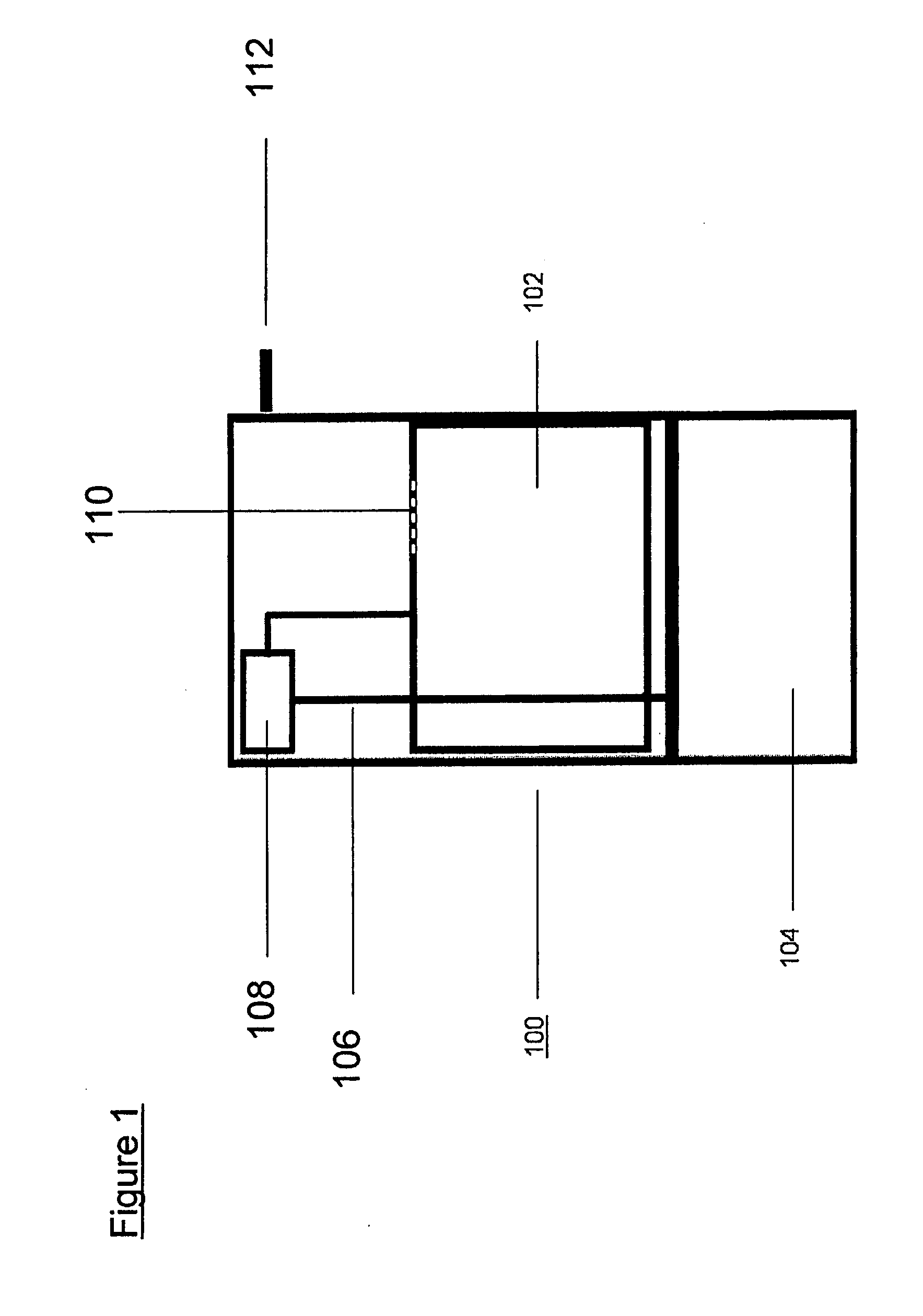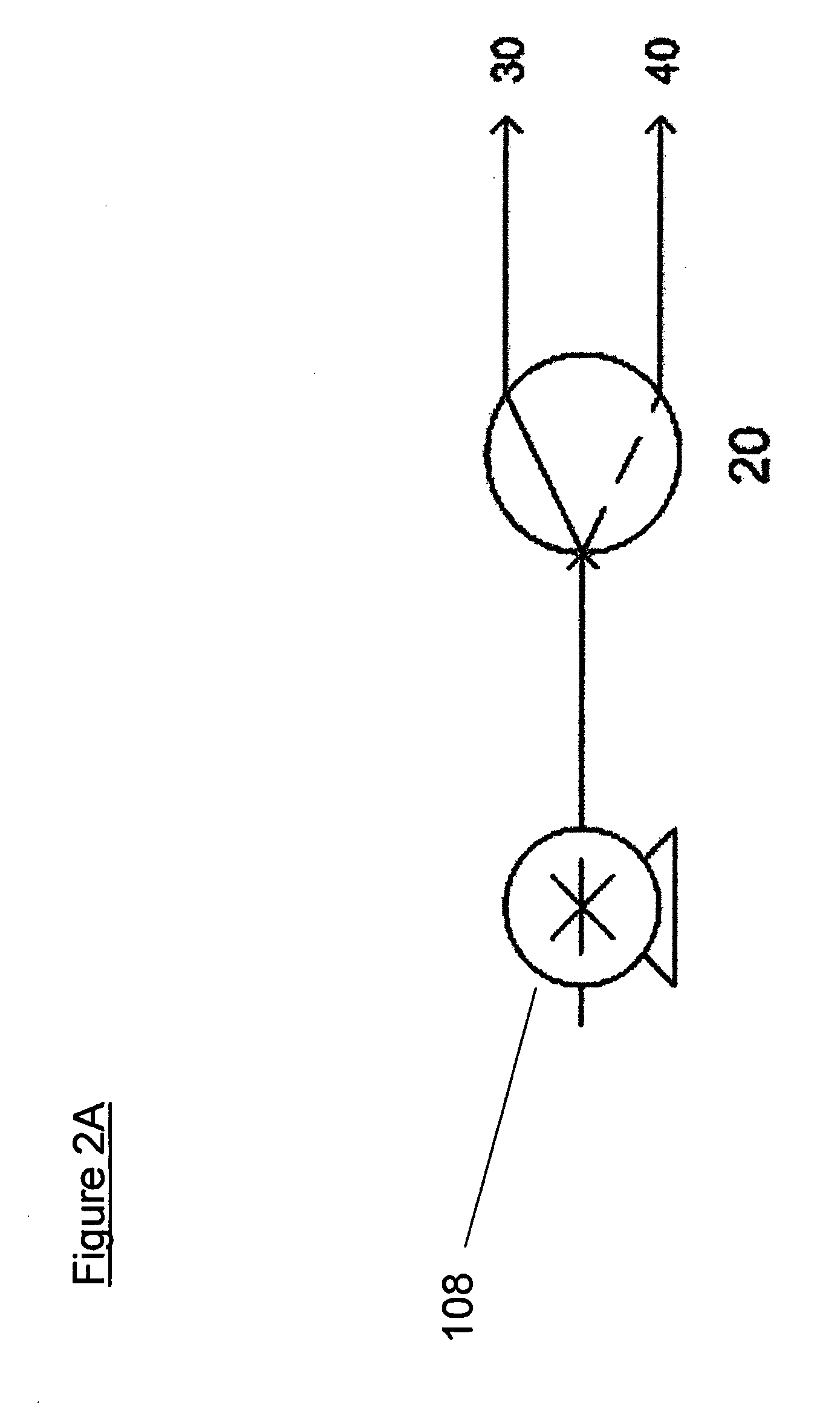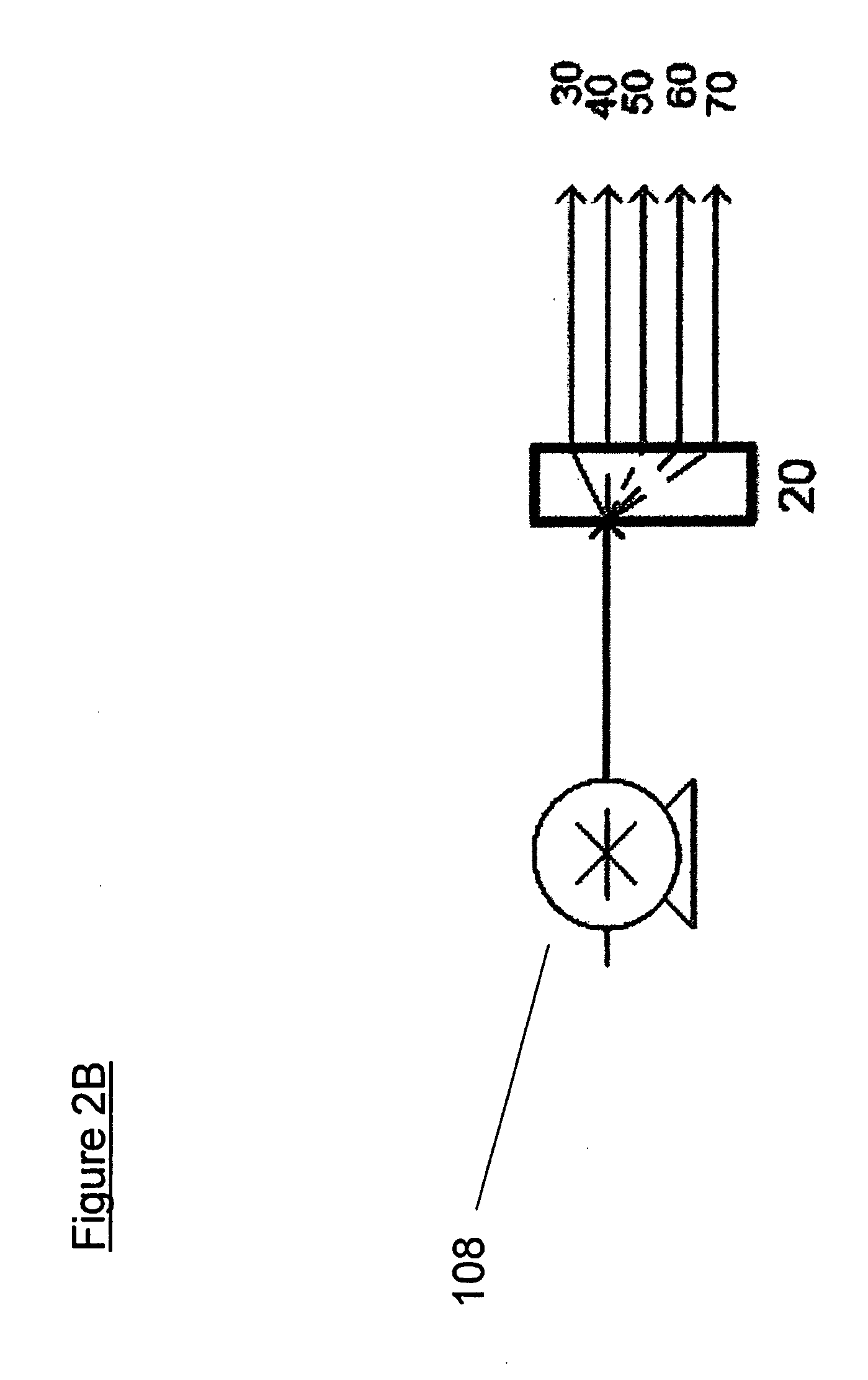Hydrogen generation systems and methods
- Summary
- Abstract
- Description
- Claims
- Application Information
AI Technical Summary
Benefits of technology
Problems solved by technology
Method used
Image
Examples
example 1
[0022]System dynamics and H2 flow rates were measured in a semi-batch reactor system with boron hydride fuels loaded in a 250 mL Pyrex reactor. The acidic reagent was fed through a single point ( 1 / 16″ o.d. tubing) at a constant feed rate of 10 mL / h. Reaction temperature was monitored with an internal thermal couple. Hydrogen was cooled to room temperature through a water / ice bath and passed through a bed of silica gel to remove any moisture in the gas stream. The dried H2 flow rate was measured with an on-line mass flow meter. The boron hydride conversion was analyzed using NMR of the post-reaction mixture after each run was completed.
[0023]Samples of a sodium borohydride / sodium hydroxide fuel composition (5.75 g consisting of 87 wt-% borohydride and 13 wt-% hydroxide based on the weight of the solid fuel) were reacted with a 27 wt-% sulfuric acid solution containing about 2 wt-% of an additive (based on the weight of the acidic reagent) as shown in Table 1. The use of an additive ...
example 2
[0024]Samples of a hydrated sodium borohydride / sodium hydroxide fuel composition (consisting of 47.5 wt-% borohydride, 2.5 wt-% hydroxide, and 50 wt-% H2O based on the weight of the fuel, such that the composition contained 5 g NaBH4) were reacted with sulfuric acid solutions with concentrations ranging from 27 wt-% to 50 wt-% using the methods described in Example 1.
[0025]The use of hydrated fuel formulations reduced hydrogen off-gassing due to unreacted reagents as compared to a nonhydrated standard with acceptable fuel conversion. It is possible to stop and restart the hydrogen generation reaction by regulating the flow of acid, and to substantially consume all fuel as shown in Table 2.
TABLE 2Hydrolysis of Hydrated Sodium Borohydride Fuel Blend withH2SO4H2 ProducedAcidAverageConc.Volgeneration rate(wt-%)(mL)Conversion %mL @ NTP(mL / min)Approximately 50% Conversion273.3548%6044189403.5049%7649158Approximately 80% Conversion306.0082%10388238406.9086%10934187506.9682%10425149Approxim...
example 3
[0026]Samples of a hydrated sodium borohydride / sodium hydroxide fuel composition (consisting of 47.5 wt-% sodium borohydride, 2.5 wt-% sodium hydroxide, and 50 wt-% H2O based on the weight of the fuel, such that the composition contained 5 g NaBH4) were reacted with a 27 wt-% sulfuric acid solution containing 2 wt-% ethylene glycol (based on the weight of the acidic reagent) using acid fed via a 3-way valve controlled by a timer for pulse two-point acid feeding to the reactor as shown in FIG. 2A.
[0027]The use of hydrated fuel formulations in combination with an additive in the acidic reagent demonstrated high fuel conversion and hydrogen generation flow rates with minimal foaming and unreacted residual acid. It is possible to stop and restart the hydrogen generation reaction by regulating the flow of acid, and to substantially consume all fuel as shown in Table 3.
TABLE 3Hydrolysis of Hydrated Sodium Borohydride FuelBlend with H2SO4Acid, mLConversion %H2 rate, mL / min3.8755%3026.9779%...
PUM
 Login to View More
Login to View More Abstract
Description
Claims
Application Information
 Login to View More
Login to View More - R&D
- Intellectual Property
- Life Sciences
- Materials
- Tech Scout
- Unparalleled Data Quality
- Higher Quality Content
- 60% Fewer Hallucinations
Browse by: Latest US Patents, China's latest patents, Technical Efficacy Thesaurus, Application Domain, Technology Topic, Popular Technical Reports.
© 2025 PatSnap. All rights reserved.Legal|Privacy policy|Modern Slavery Act Transparency Statement|Sitemap|About US| Contact US: help@patsnap.com



